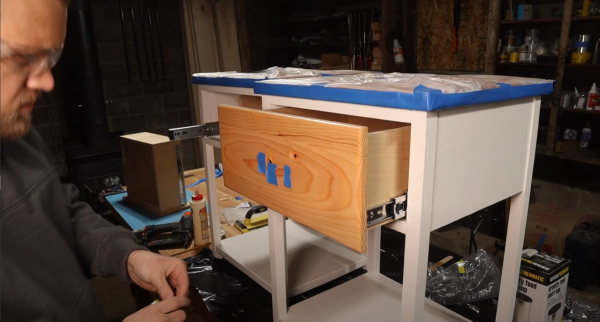Here at Hackaday, we typically cover things that blink, bleep, and occasionally they might even bloop. However, the name of the site is Hackaday. We’re about being clever, reusing things in new ways, and most importantly celebrating interesting projects. While not a traditional project that would grace the front page, we would argue that this nightstand made from framing lumber clearly belongs.
Framing lumber is infamous for being squirrely, weird, and heavily knotted. Most serious furniture makers avoid using the cheap stuff and opt for more expensive harder woods. Here in the US, the big box hardware stores carry cheap fast-grown soft pine that has significant amounts of warp and twist inherent in the wood. The process of getting it straight with right-angle corners is involved and even once it has been cut, the internal stresses inside the wood are released, rendering the board twisted and warped again over time. The timelapse process of planing, jointing, and cutting in the video has an almost therapeutic aspect to it. The results are two wonderful pieces of useful furniture that would look at home in most rooms.
The craftsmanship evident in the build is noteworthy but more impressive is the process of taking cheap and unfit materials and making something beautiful out of them. Perhaps if you’re inspired and decide to make your own nightstand this weekend, you can add some touch-sensitive electronics to it. Video after the break.
Continue reading “Making Something Gorgeous From Framing Lumber”












